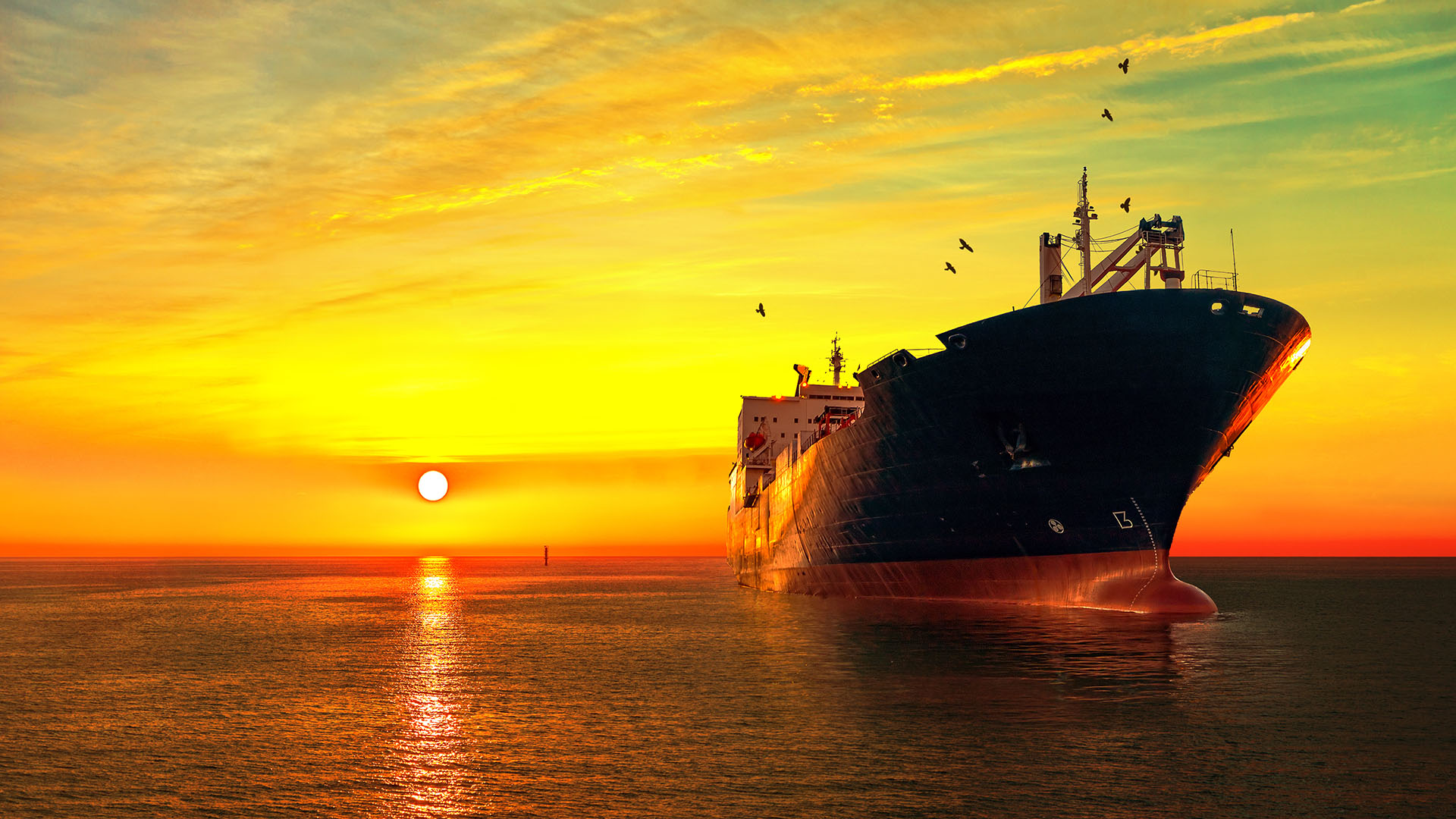European shipping and ships calling at EU ports became subject to the EU ETS in January 2024. Whilst much about the administration and operation of the scheme has become clearer in recent months, some elements of the EU ETS and its application to chartering, management arrangements and vessel operations have been more difficult to navigate due to limited guidance from the EU and Member States and the many variations of ship ownership structures, management and operation that are seen in the industry.
An overview of the EU ETS regime can be found here: Shipping and EU ETS: The changing landscape | Global law firm | Norton Rose Fulbright. The purpose of this article is to examine what we have learned about the regime in its first few months of operation.
Who will be responsible for compliance with the EU ETS?
The EU ETS Directive provides that for each vessel a ‘shipping company’ will be responsible for compliance with the scheme. Under the Commission Implementing Legislation (EU) 2023/2599 (the Implementing Legislation), the default position is that the registered owner of a vessel is the ‘shipping company’ responsible for the vessel’s compliance with the EU ETS. The shipping company is required to establish a maritime operator’s holding account (MOHA) in the Member State where it is established (if in the EU) or, if it is a non-EU entity, in the Member State where the ‘shipping company’ is directed to establish the account. For details of how this is determined please see below.
There is however an option, provided both parties agree, for the registered owner to mandate the Document of Compliance Holder (DOC Holder) to have responsibility for compliance with the EU ETS. Where the DOC Holder agrees to take over this responsibility, a mandate document (the Mandate) will be provided to the relevant administering authority for the vessel. The Mandate will need to provide details about the vessel and its registered owner and crucially, a confirmation that the DOC Holder has agreed to comply with the EU ETS obligations for the vessel. The Mandate has to be signed by both the registered owner and the DOC Holder. There is no flexibility in this structure and the EU and Member States have made it clear that only these two entities can have a role in compliance under the regulations.
Whilst these options for compliance might appear to be relatively straightforward, they do raise a number of issues, particularly in the context of chartering and management arrangements:
- Bareboat chartering arrangements – if a bareboat charter is in place, the registered owner (for instance a finance lessor) will not usually have any meaningful involvement with the operation of the vessel and will not be responsible for operating costs. Quite often, the lessor wants nothing to do with compliance with EU ETS at all. The bareboat charter will set out in clear terms that the operational responsibility lies with the charterer. The Implementing Legislation does not, however, recognise the nuances of chartering arrangements and leaves responsibility for compliance with the EU ETS with the registered owner. If the bareboat charterer of the vessel is the DOC Holder, then this disconnect between the contractual reality of vessel operation and the legislation will not be too difficult to manage: the registered owner will need to sign the Mandate, passing responsibility to the charterer for EU ETS compliance.
However, in many cases, the bareboat charterer will have contracted a third party technical manager to be the DOC Holder. This makes the position more complicated: if the third party DOC Holder is willing to take over the EU ETS obligations for the vessel, then the registered owner and the DOC Holder will need to agree and sign the Mandate in circumstances where these parties would not normally have any contractual relationship or interaction with each other. It is possible for the registered owner to delegate responsibility for mandating the DOC Holder to the bareboat charterer and this is commonly arranged – usually a formal letter from the lessor delegating this authority to the lessee is sufficient for the administering authority.
We have seen instances where the third party DOC Holder will not be willing to accept the mandate for EU ETS compliance. If this is the case, the registered owner and bareboat charterer will need to consider carefully how to manage the situation as it would be almost unthinkable that a registered owner would be willing to remain liable for the administration, costs and obligations associated with managing the EU ETS obligations where the vessel has been bareboat chartered. However, it is not possible under the Implementing Legislation for the bareboat charter to be the ‘shipping company’ unless it is also the DOC Holder. It is also not possible for the DOC Holder who administers compliance with Regulation (EU) 2015/757 of the European Parliament and of the Council of 29 April 2015 on the monitoring, reporting and verification of carbon dioxide emissions from maritime transport, and amending Directive 2009/16 (the MRV Regulation) to delegate compliance with the EU ETS to another party. In a number of cases, we have seen the bareboat charterer having to appoint a new DOC Holder to get around this issue.
- Third party DOC Holder – as noted above, if the DOC Holder of a vessel is a third party, there will need to be discussions as to whether it is prepared to accept responsibility for EU ETS compliance. The burden of this responsibility should not be underestimated – ship managers have had to acquire new skill sets in order to administer the regulations. If the DOC Holder is prepared to take on this role, then the scope of the additional responsibilities and ancillary issues such as how the costs associated with the scheme will be allocated will need to be dealt with in the management agreement. If the DOC Holder is not willing to take on the role, then the registered owner will need to carry it out itself or look to move the DOC Holder function to another entity that willing to take on responsibility for compliance. We have seen DOC Holders require a specific letter of indemnity and a hold harmless from the bareboat charterer to undertake such responsibility.
If the DOC Holder is willing to take over responsibility for compliance, the registered owner will need to consider if the DOC Holder is carrying out this function for other vessels. The EU ETS Directive provides that where the obligations under the scheme in relation to any vessel are not met for two consecutive years, an expulsion order can be issued to the entity responsible for that ship. The expulsion order will not just apply to the non-compliant ship, but also to any other vessels for which the managing entity is responsible. The effects of an expulsion order are severe: in effect a blacklisting of vessels, prohibiting them from entering EU ports located in Member States in which they are not flagged. If a blacklisted vessel enters a port in the Member State in which it is flagged, then it can be detained. Shipowners will need to consider the risk that a non-compliant, unrelated vessel for which the DOC Holder is responsible under the EU ETS could trigger a blacklisting or detention for its own vessel. This may occur, for instance, if the DOC finds itself insolvent and unable to discharge its surrender obligations.
Which Member State will be the administering authority for a ship?
Whether it is the registered owner or the DOC Holder who is responsible for EU ETS obligations, that entity will need to be allocated to a Member State who will administer the EU ETS for that entity. In practice this means that the relevant ‘shipping company’ will need to open a registry account in that Member State and submit all necessary allowances there to meet its obligations. If a ‘shipping company’ is incorporated in a Member State, that Member State will be the administering authority for the company. Where the ‘shipping company’ is incorporated outside of the EU, then historic port call data is looked at for all vessels allocated to that company in order to determine which Member State will be the administering authority. In accordance with the EU ETS Directive, the EU has produced a master list of shipping companies and administering authorities (available here: Commission Implementing Decision (EU) 2024/411 of 30 January 2024 on the list of shipping companies specifying the administering authority in respect of a shipping company in accordance with Directive 2003/87/EC of the European Parliament and of the Council (europa.eu). No amendments will be made to the allocations set out in the list until February 2026. Due to the way in which vessel data has been collected, not all entities which will be ‘shipping companies’ responsible for compliance with the EU ETS are included in the list. This might be because the DOC Holder for a particular vessel appears in the list, but it is the registered owner who will be dealing with the EU ETS obligations. If the name of the ‘shipping company’ does appear on the list, it should have requested the opening of a MOHA from the administering authority in the relevant Member State within 40 working days from the publication of the list, so this was due before the end of March. For a ‘shipping company’ that does not appear on the list, the EU FAQs1 state that the relevant entity, if it does not already have one, will need to set up a THETIS-MRV account and discuss the allocation to a relevant administering authority with a helpdesk. THETIS-MRV is a platform set up to implement the requirements of the MRV Regulation by facilitating the reporting of emissions data through THETIS-MRV accounts. This data is used as a basis for emissions calculations for the purposes of EU ETS liabilities. The FAQs suggest that the MOHAs for shipping companies that do not appear on the list should be in place within 65 working days of the first voyage falling with the scope of the EU ETS. If the company to which a vessel is allocated for the purposes of THETIS-MRV is changed, for example if a vessel is sold mid-reporting period, the process will need to be managed carefully. Regulation 2023/957 provides that where there is a mid-reporting period change in the shipping company for a vessel, a ‘partial’ emissions report can be submitted through THETIS-MRV for the period up until the change occurs. However, all relevant data must be submitted carefully by the outgoing shipping company before the system is updated.
It is not clear from the legislation what the position will be if the MOHAs are not opened within the prescribed time limits.
EUAs and insolvency
One problematic issue is how the emissions allowances collected by a DOC Holder under the EU ETS (EUAs) will be dealt with in an insolvency. An insolvency process by a company connected with a ship, whether owner, charterer or manager will of course have implications for the other entities interested in the ship. Parties will now need to consider how liabilities under the EU ETS will be dealt with in insolvency regimes and what, if any, impact this will have on their individual situations. Where the ‘shipping company’ becomes insolvent - whether that is the DOC Holder or the registered owner, it will remain liable for the surrendering of allowances for vessels for which it has EU ETS responsibility and so it will be a question for the insolvency regime in the relevant jurisdiction as to how this will be dealt with: it would certainly seem reasonable to expect these liabilities to be taken into account in some way by an administrator or trustee. Where a vessel is sold during an insolvency process, then the liability to surrender allowances for emissions produced up until the point of sale would remain with the relevant ‘shipping company’ and not attach to the vessel, which will be welcomed by purchasers.
Where the situation becomes more complicated is when it has been commercially agreed that EUAs are being purchased by a third party, such as a charterer, and then transferred to a ‘shipping company’s’ MOHA. This arrangement will be reflected contractually, usually in the charter, and may provide for the EUAs to be transferred to the MOHA periodically – monthly, quarterly, or even annually. Should the third party become insolvent then the shipowner or operator will need to understand how any EUAs which are in the insolvent entity’s trading account will be dealt with and what their claim to these allowances would be. The position may vary across jurisdictions and given the global nature of the industry and the ability to ‘forum shop’ when it comes to making decisions as to where to put a company into an insolvency process, there may be a number of differing answers to this issue.
The ship owners and operators are not the only entities that have an interest in how EUAs will be treated on insolvency: where a ‘shipping company’ becomes insolvent before allowances are surrendered, the EU itself may be concerned about where the liability for EU ETS obligations will be dealt with in the insolvency proceedings. For example, could EU ETS liabilities be seen as maritime liens which rank ahead of a mortgage in certain jurisdictions? Could there be a claw-back in relation to EUA trades which occur within a certain hardening period before insolvency? Finally, there is a risk that a ‘shipping company’, in financial difficulty, is tempted to 'borrow' EUAs from a trading account or MOHA to raise funds to cover expenses. There is no restriction on a shipping company taking emissions allowances out of a MOHA. If that ‘shipping company’ is not then able to repay these ‘borrowed’ EUAs due to insolvency, there will be an EUA deficit and consequential penalties, even though the charterer, for instance, has transferred the allowances due. There is much that needs to be considered in this respect.
Mid-period changes in ownership or chartering arrangements and EU ETS liability
As mentioned above, liabilities for EU ETS compliance lie with the ‘shipping company’. This means that if there is a mid-period sale of a vessel or change of DOC Holder then, at the time when allowances need to be submitted for the previous year, the relevant ‘shipping company’ must submit the allowances for the period when it was responsible for the vessel2. Using the example of a vessel sale, this would mean that where Company A owned the vessel from January-June and Company B owned the vessel from July onwards, when the allowances have to be surrendered for that particular accounting year, Company A will need to submit allowances from its MOHA for the emissions from January-June and Company B, will need to submit allowances from its MOHA for the emissions from July until the end of that year. There is no mechanism by which Company A can transfer liability for the period under its ownership to Company B – the administering authority would not recognise that Company B has any liability for the period before it took ownership.
Whilst this might involve more administrative steps in a vessel sale or change of DOC Holder to ensure that all parties are comfortable with the emissions data at the point of the change, it is not likely to be a significant issue for the parties involved. Incoming time charterers may require a warranty from the owner of the vessel that EUAs have been received from the outgoing charterer to ensure that there is no potential impact on the incoming charterer’s use of the vessel.
Conclusion
The past few months have provided much welcome clarity on the practicalities or how the EU ETS will be administered for the maritime industry from both the EU and the various administering authorities. The vast majority of participants have taken the change in their stride and dealt with the new liability through sensible contractual clauses – although we have seen some clauses deviate markedly from the BIMCO clauses circulated at the end of last year. However there still remain difficulties which need to be fully considered by shipping industry participants to avoid pitfalls in the future. Careful drafting of chartering clauses and ship management agreements must take into account these complex issues and parties must understand that, as the percentage of emissions allowances that are required to be surrendered rises year on year, reaching 100% in 2026, these liabilities will become increasingly significant.





